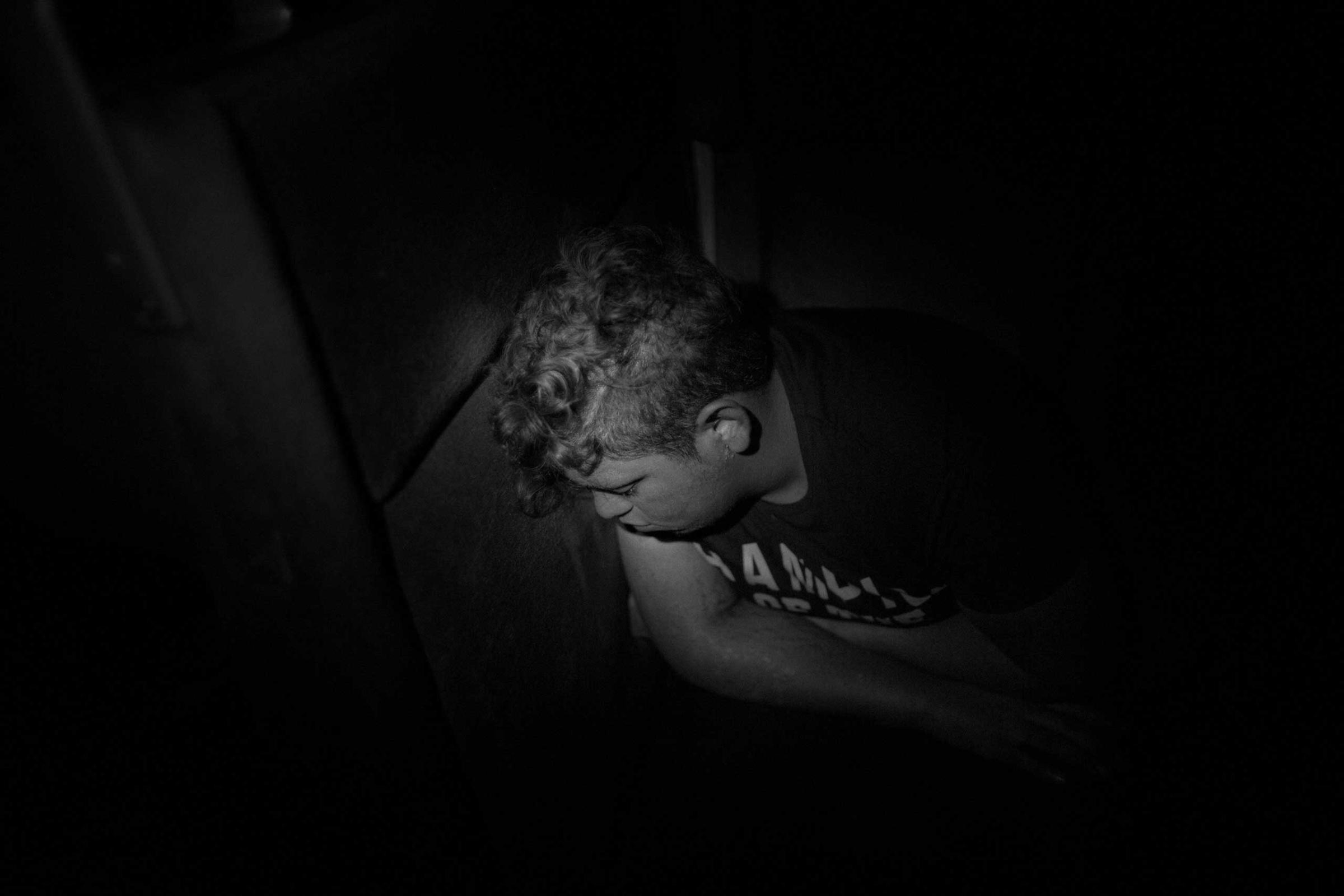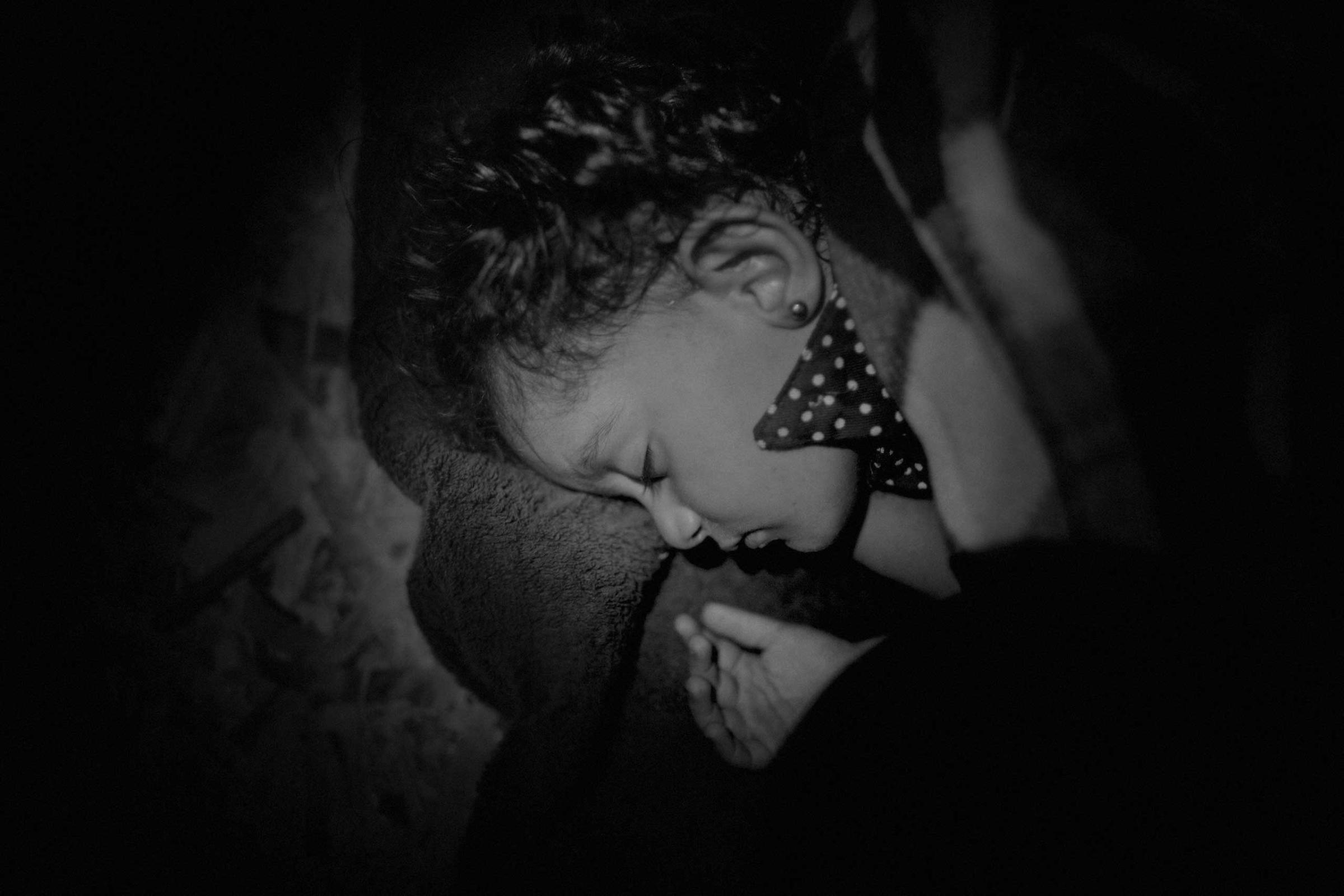
When Italian photographer Fabio Bucciarelli boarded an overcrowded local train in Gevgelija, Macedonia, just across the Greek border, and embarked on a five-hour trip to Tabanovce, near the Serbian border, he felt an urgency to tell a different kind of story.
He wanted to move away from the images of overcrowded dinghies reaching Greek islands and of thousands of families walking along train tracks.
A photojournalist and recipient of the prestigious Robert Capa Gold Medal for his work Battle To Death on Syria’s civil war, Bucciarelli has often pursued the sort of photography that captures the bare reality as it unfolds before his lens. What he witnessed on a train to Tabanovce was no different: exhausted passengers packed into the seats and along narrow aisles as the train made its way northward. “If we think about those photographs that came out in those same days from the Balkans, those are photographs that show tension, clashes, people trying to escape; tired and distraught people,” he says.
But this time, Bucciarelli aimed to show a different dimension. He chose to portray his subjects devoid of any conventional attributions that would define them as anything other than men, women and children. “After documenting the breaking news of the refugees, I thought to produce a body of work that could decontextualize the refugee to make them more human,” he tells TIME. “So [I tried to represent] the humanity of refugees in their most intimate moment: during their sleep.”
The result is Dreaming Europe, a body of work whose intimate, subtle portraits document refugees as they find a moment of peace on their long and grueling journey. The project, which references Tim Hetherington’s Sleeping Soldiers series, forms the last chapter of a broader body of work, The Dream, started in 2011 and soon to be published by FotoEvidence, which chronicles the aftermath of the Arab Spring through the journey of refugees fleeing the Middle East and North Africa. “‘The Dream’ aims to explain and display the status of the migrants,” Bucciarelli says, “regardless of where they are escaping from or where they are going. [It is a project that] aims to describe a feeling and their status through a dreamlike journey.”
Bucciarelli underscores the importance of removing all elements of context from the portraits to emphasize the refugees’ precarious conditions as European leaders struggle to find a collaborative and definite way to address the crisis. “The [status] of the refugee is not completely clear yet,” says Bucciarelli. “The European Community still doesn’t know fully how to manage this crisis.”
This feeling of uncertainty is highlighted by the name of the project itself. Having embarked on a perilous and draining journey with the hope of reaching Europe, these people are only halfway there. They rest for a moment, but their destination and fate are all but certain. “We imagine them dreaming, and clearly they are dreaming about the future, about Europe, about escaping the war, about a new hope.”
Fabio Bucciarelli is an award-winning photographer focused on conflicts and the humanitarian consequences of war. He is one of the founders of Me-Mo.
Mikko Takkunen, who edited this photo essay, is International Photo Editor at Time.com. Follow him on Twitter @photojournalism.
Lucia De Stefani is a writer and contributor for TIME LightBox. Follow her on Twitter and Instagram.
Follow TIME LightBox on Facebook, Twitter and Instagram.












More Must-Reads from TIME
- Breaking Down the 2024 Election Calendar
- How Nayib Bukele’s ‘Iron Fist’ Has Transformed El Salvador
- What if Ultra-Processed Foods Aren’t as Bad as You Think?
- How Ukraine Beat Russia in the Battle of the Black Sea
- Long COVID Looks Different in Kids
- How Project 2025 Would Jeopardize Americans’ Health
- What a $129 Frying Pan Says About America’s Eating Habits
- The 32 Most Anticipated Books of Fall 2024
Contact us at letters@time.com